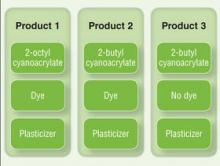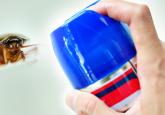Contact Dermatitis
Allergic Contact Dermatitis From Ketoconazole
Ketoconazole is a widely used imidazole antifungal agent. True contact allergy to topical ketoconazole is rare, and few cases of patients with...
Casey Bowen, MD; Jeff Bidinger, MD; Chad Hivnor, MD; Aaron Hoover, MD; Jeffrey Scott Henning, DO
From the Department of Dermatology, San Antonio Uniformed Services Health Education Consortium, Lackland Air Force Base, Texas.
The authors report no conflict of interest.
The opinions expressed in this article are those of the authors and do not represent the viewpoints of the US Air Force, the US Army, or the US Department of Defense.
Correspondence: Casey Bowen, MD, Department of Dermatology, San Antonio Military Medical Center South, 2200 Bergquist Dr, Ste 1, Lackland AFB, TX 78236 (caseybowen.2@us.af.mil).

Management of ACD from skin adhesives should involve the immediate removal of any remaining adhesive. One manufacturer recommends removal of the product using acetone or petroleum jelly.1 In our experience, rubbing the adhesive with 2×2-in gauze pads or using forceps have been successful methods for removal. The use of petroleum jelly prior to rubbing with gauze also can aid in removal of the adhesive. Warm water soaks and soap also may be helpful but are not expected to immediately loosen the bond. A mid-potency steroid ointment such as triamcinolone may be effective in treating dermatitis, though the use of higher-potency steroids such as clobetasol may be needed for severe reactions.1,2
As members of the cyano group, cyanoacrylates are highly reactive molecules that polymerize and rapidly bind to the stratum corneum when they come in contact with traces of water. During polymerization, the individual constituents or monomer cyanoacrylate molecules are joined into a polymer chain, which should be trapped by keratinocytes and not reach immunomodulators2,10; however, as postulated during the first report of contact dermatitis, an arid environment could delay polymerization and increase the risk of sensitization.2 The first report was made in Las Vegas, Nevada,2 and our cases presented in San Antonio, Texas.
There currently are 2 main cutaneous adhesives containing cyanoacrylate on the market, including 2-octyl cyanoacrylate and 2-butyl cyanoacrylate. These products are known by various trade names and differ primarily in the length of the carbon chain in the cyanoacrylate. A dye is added to allow better visibility of the glue during application, and a plasticizer increases viscosity and accelerates polymerization. The 2 most widely used products contain the same dye (D&C Violet No. 2) and similar but proprietary plasticizers.
 Figure 4. When conducting use tests to determine if plasticizers or dyes in acrylate adhesive products may be potential allergens, a reaction only to product 1 would suggest that 2-octyl cyanoacrylate is to blame. A reaction to products 2 and 3 but not product 1 would suggest 2-butyl cyanoacrylate as a sensitizer, while a reaction to products 1 and 2 but not product 3 would suggest that the dye is responsible.
Figure 4. When conducting use tests to determine if plasticizers or dyes in acrylate adhesive products may be potential allergens, a reaction only to product 1 would suggest that 2-octyl cyanoacrylate is to blame. A reaction to products 2 and 3 but not product 1 would suggest 2-butyl cyanoacrylate as a sensitizer, while a reaction to products 1 and 2 but not product 3 would suggest that the dye is responsible.
Although plasticizers and dyes may be potential contact allergens, we postulated that the cyanoacrylate was the responsible sensitizer in our cases. Because the individual ingredients were not readily available for use testing, we devised a logical method to attempt to determine the specific component of the skin adhesive that was responsible for contact sensitization (Figure 4). Patients 3 and 4 in our series were tested using this method and were found to be sensitive to the product containing 2-octyl cyanoacrylate but not the products containing 2-butyl cyanoacrylate.
Conclusion
Given the many advantages of cyanoacrylates, it is likely that their use in skin adhesive products will continue to increase. Our 4 patients may represent a rise in the incidence of ACD associated with increased use of skin adhesives, but it is important to look critically at this agent when patients present with postoperative pruritus in the absence of topical bacitracin or neomycin use and surgical dressing irritation. By using the technique we described, it is possible to identify the component responsible for the reaction; however, in the future, the exact mechanisms of sensitization and the specific components should be further elucidated by researchers working in conjunction with the manufacturers. Use testing on abraded skin and/or under occlusive dressings more closely mimics the initial exposure and may have a role in determining true allergy.
Ketoconazole is a widely used imidazole antifungal agent. True contact allergy to topical ketoconazole is rare, and few cases of patients with...

Topical insect repellent is commonly used throughout the world. Active ingredients typically include N,N-diethyl-meta-toluamide (DEET) or...
Contact allergy to methacrylates is uncommon. We present a 55-year-old woman with a 10-year history of persistent pruritus and burning sensation...
